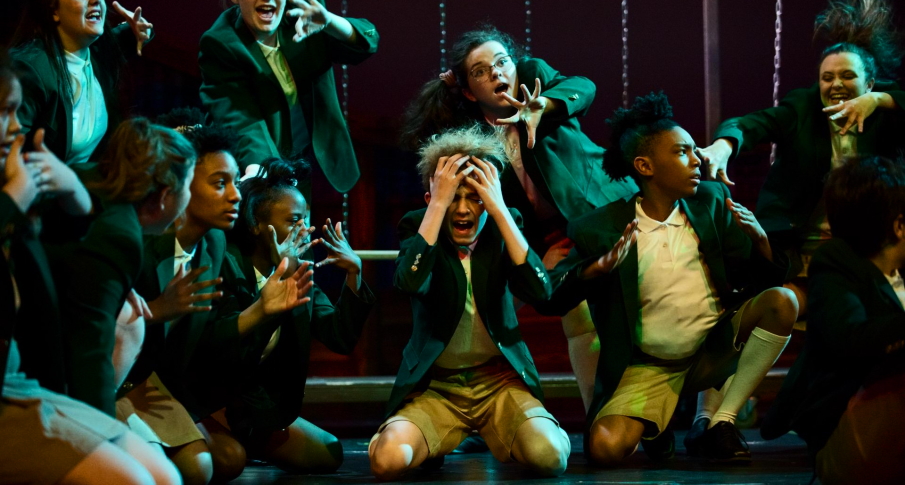If you’ve ever found yourself captivated by a beautiful painting, moved by a breathtaking dance performance, or transported by the magic of live theater, then you’ve experienced the power of visual and performing arts. But what exactly do these terms mean? In this article, we’ll delve into the world of visual and performing arts, exploring their definitions, significance, and the ways in which they enrich our lives. So, grab a seat and get ready to embark on an artistic journey like no other!
Visual and performing arts encompass a wide range of creative expressions that engage our senses and emotions. Visual arts encompass disciplines such as painting, sculpture, photography, and printmaking, where artists use various materials and techniques to create visual representations of ideas, emotions, and observations. On the other hand, performing arts include disciplines such as dance, theater, music, and film, where artists use their bodies, voices, and instruments to bring stories and emotions to life in front of an audience. Whether it’s a brushstroke on a canvas, a graceful ballet leap, or a soul-stirring musical composition, visual and performing arts have the incredible ability to evoke emotions, inspire imagination, and foster a deeper understanding of the world around us. So, let’s dive deeper into the enchanting realm of visual and performing arts and discover the wonders they hold.

What Is Visual and Performing Arts?
Visual and Performing Arts encompass a wide range of artistic disciplines that involve both visual and performing elements. These arts disciplines include painting, sculpture, photography, dance, theater, music, and film. Visual arts refer to the creation of artworks that can be seen, such as paintings, drawings, and sculptures. On the other hand, performing arts involve live performances, such as dance, theater, and music, where artists use their bodies, voices, and instruments to convey their artistic expression.
Visual and Performing Arts have been an integral part of human culture for centuries. They serve as a means of creative expression, communication, and cultural preservation. Through these art forms, artists can convey emotions, tell stories, raise awareness, and challenge societal norms. Visual and Performing Arts also provide a platform for individuals to explore their creativity, develop their skills, and express their unique perspectives.
The Importance of Visual and Performing Arts
Visual and Performing Arts play a crucial role in society for several reasons. Firstly, they contribute to the cultural identity of a community or nation. Artworks and performances reflect the values, beliefs, and traditions of a particular culture, preserving its heritage for future generations. They serve as a visual and auditory representation of a society’s history, customs, and aspirations.
Secondly, Visual and Performing Arts promote creativity and critical thinking skills. Engaging in artistic activities encourages individuals to think outside the box, explore new ideas, and find innovative solutions to problems. Through the process of creating art, individuals develop their imagination, observation skills, and ability to analyze and interpret the world around them.
Furthermore, Visual and Performing Arts enhance personal well-being and emotional expression. Artistic activities provide an outlet for individuals to express their thoughts, emotions, and experiences in a safe and non-judgmental space. Engaging in art forms such as painting, dancing, or playing a musical instrument can be therapeutic, helping individuals relieve stress, boost self-confidence, and improve their overall mental health.
Additionally, Visual and Performing Arts contribute to economic growth and tourism. Cultural events, exhibitions, and performances attract both local and international audiences, generating revenue for artists, performers, and arts organizations. They also contribute to the development of creative industries, such as film production, fashion design, and advertising, which play a significant role in the global economy.
In conclusion, Visual and Performing Arts encompass a wide range of artistic disciplines that involve both visual and performing elements. They are essential for preserving cultural heritage, promoting creativity and critical thinking, enhancing personal well-being, and contributing to economic growth. Engaging with Visual and Performing Arts allows individuals to explore their creativity, express their emotions, and connect with others on a profound level. Whether as creators or spectators, we can all benefit from the transformative power of Visual and Performing Arts in our lives.
Key Takeaways: What Is Visual and Performing Arts?
- Visual and performing arts include activities such as painting, drawing, sculpture, music, dance, and theater.
- These forms of art allow individuals to express their creativity and emotions.
- Visual arts involve creating images or objects using various materials and techniques.
- Performing arts involve live performances, such as musical concerts or theater plays.
- Engaging in visual and performing arts can enhance critical thinking, problem-solving, and communication skills.
Frequently Asked Questions
Question 1: What are the different forms of visual and performing arts?
Visual and performing arts encompass a wide range of artistic expressions. In visual arts, you have mediums such as painting, sculpture, photography, printmaking, and ceramics, among others. Performing arts, on the other hand, include disciplines like dance, music, theater, and film. These forms of art allow individuals to express their creativity and emotions through various techniques and styles.
Whether it’s a beautifully painted canvas, a captivating dance performance, or a powerful symphony, visual and performing arts offer a platform for artists to communicate and connect with audiences on a profound level. Each art form has its unique characteristics and techniques, making the world of visual and performing arts diverse and vibrant.
Question 2: What is the significance of visual and performing arts?
Visual and performing arts play a crucial role in society, enriching our lives in numerous ways. They serve as a means of self-expression, allowing individuals to convey their thoughts, emotions, and experiences through creative mediums. Art has the power to inspire, provoke thought, and evoke strong emotions in both the artist and the audience.
Moreover, visual and performing arts contribute to cultural heritage and identity. They reflect the values, traditions, and history of a community or society, preserving and celebrating its unique cultural expressions. Art also has therapeutic benefits, providing an outlet for individuals to explore their inner selves, relieve stress, and promote well-being.
Question 3: How can visual and performing arts be pursued as a career?
Visual and performing arts offer a plethora of career opportunities for those passionate about pursuing a creative path. In visual arts, individuals can become professional artists, working in galleries, museums, or as freelance creators. They can also explore careers in fields like graphic design, illustration, art education, or art therapy.
For those interested in performing arts, careers as dancers, musicians, actors, or directors are possible. They can work in theaters, dance companies, orchestras, or film and television productions. Additionally, individuals can pursue teaching or coaching positions, sharing their knowledge and passion for the arts with others.
Question 4: How do visual and performing arts contribute to education?
Visual and performing arts play a vital role in education, fostering creativity, critical thinking, and problem-solving skills. By engaging in artistic activities, students develop their ability to communicate ideas visually, interpret and analyze works of art, and think outside the box.
Art education also encourages collaboration and teamwork, as students often work together to create performances or collaborate on artistic projects. It provides a platform for self-expression and personal growth, boosting students’ confidence and self-esteem. Moreover, exposure to art and culture enhances cultural understanding and appreciation, broadening students’ perspectives and nurturing their empathy.
Question 5: How can one appreciate and support visual and performing arts?
There are several ways to appreciate and support visual and performing arts. Attending art exhibitions, theater productions, music concerts, or dance performances is a great way to experience and engage with different art forms. By purchasing artwork or supporting local artists, you contribute to the sustainability of the arts community.
Supporting arts organizations and educational institutions that promote visual and performing arts is also crucial. Volunteering, donating, or becoming a member of such organizations helps ensure that art continues to thrive and reach a wider audience. Finally, spreading the word and sharing your passion for art with others can inspire and encourage more people to appreciate and support visual and performing arts.

What is Performing arts? Explain Performing arts, Define Performing arts, Meaning of Performing arts
Final Summary: Understanding Visual and Performing Arts
In summary, visual and performing arts encompass a wide range of creative expressions that engage our senses, emotions, and imagination. These art forms provide a platform for individuals to communicate ideas, tell stories, and explore the depths of human experience. Through the use of various mediums such as paint, sculpture, music, dance, theater, and film, artists bring their visions to life, leaving a lasting impact on both the creators and the audience.
Visual arts, including painting, drawing, sculpture, and photography, allow artists to capture the beauty of the world around us and express their unique perspectives. Whether it’s a thought-provoking painting or a captivating photograph, visual art has the power to evoke emotions, challenge societal norms, and ignite conversations. Similarly, performing arts, such as music, dance, theater, and film, transport us into different worlds and immerse us in captivating narratives. The rhythmic beats of a drum, the graceful movements of a ballet dancer, the powerful monologues of actors, or the visual storytelling of filmmakers all have the ability to captivate our minds and touch our souls.
Engaging with visual and performing arts not only provides aesthetic pleasure but also offers numerous cognitive, emotional, and social benefits. These forms of artistic expression foster creativity, critical thinking, empathy, and cultural understanding. They encourage us to see the world through different lenses, challenge our preconceived notions, and broaden our perspectives. Whether as creators or spectators, visual and performing arts enrich our lives, inspire us to dream, and ignite our passion for self-expression.
So, let us celebrate and embrace the beauty of visual and performing arts, for they have the power to unite, educate, and transform us all. Let us explore the galleries, attend live performances, and immerse ourselves in the world of artistic expression. For in doing so, we open ourselves up to a world of endless possibilities, where creativity knows no bounds and the human spirit is unleashed in all its glory.




